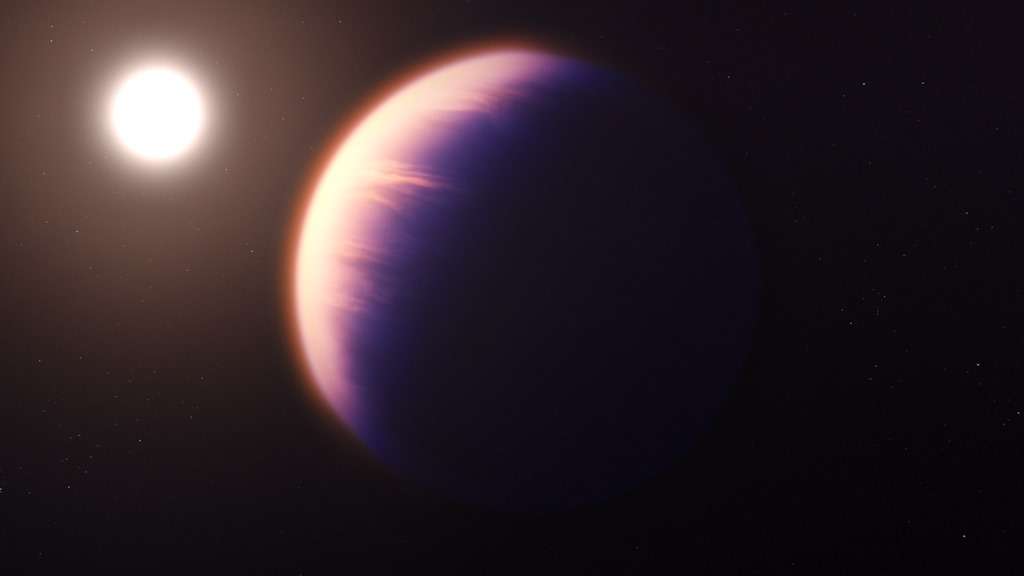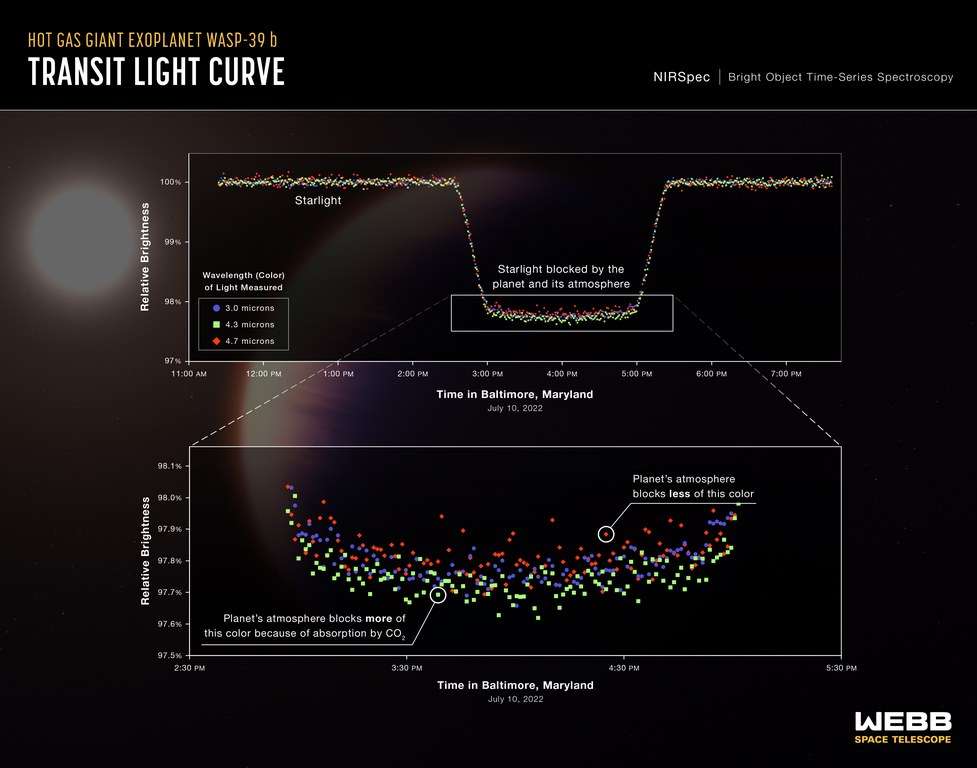Breakthrough Might Finally Destroy the Harmful 'Forever Chemicals' in Our Water
Chemists at Northwestern have figured out how to destroy PFAS ‘forever chemicals' using low temperatures and inexpensive, common substances.

For all the grief carbon dioxide gets down here on Earth, its detection for the first time ever in the atmosphere of an exoplanet has scientists elated.
The finding, produced by the James Webb Space Telescope, offers evidence that in the future Webb will be able to measure carbon dioxide in the thinner atmospheres of smaller rocky planets-and zero in on those most likely to contain life.
This observation of a gas giant planet orbiting a Sun-like star 700 light-years away provided important insights into the composition and formation of the planet,
WASP-39 b is a hot gas giant with a mass roughly one-quarter that of Jupiter (about the same as Saturn) and a diameter 1.3 times greater than Jupiter. Its extreme puffiness is related in part to its high temperature (about 1,600 degrees Fahrenheit or 900 degrees Celsius).
Unlike the cooler, more compact gas giants in our solar system, WASP-39 b orbits very close to its star, completing one circuit in just over four Earth-days.
Previous observations from other telescopes, including NASA's Hubble and Spitzer space telescopes, revealed the presence of water vapor, sodium, and potassium in the planet's atmosphere. Webb's unmatched infrared sensitivity has now confirmed the presence of carbon dioxide on this planet as well.
"As soon as the data appeared on my screen, the whopping carbon dioxide feature grabbed me," said Zafar Rustamkulov, a graduate student at Johns Hopkins University and member of the JWST who worked with the investigation. "It was a special moment, crossing an important threshold in exoplanet sciences."
The research team used one of Webb's four peerless instruments, known as the Near-Infrared Spectrograph (NIRSpec).
In the resulting spectrum of the exoplanet's atmosphere, a small reading between 4.1 and 4.6 microns presented the first clear, detailed evidence for carbon dioxide ever detected in a planet outside the solar system.
Access to this part of the spectrum is crucial for measuring abundances of gases like water and methane, as well as carbon dioxide, which are thought to exist in many different types of exoplanets.

"Carbon dioxide molecules are sensitive tracers of the story of planet formation," said Mike Line of Arizona State University, another member of this research team.
"By measuring this carbon dioxide feature, we can determine how much solid versus how much gaseous material was used to form this gas giant planet. In the coming decade, JWST will make this measurement for a variety of planets, providing insight into the details of how planets form and the uniqueness of our own solar system."
It's also entirely fundamental to life's processes on Earth at both higher and foundational orders-an inescapable constant in our bodies, ecosystems, and technology.
With a great demand for Webb's unparalleled capabilities among scientists, Line and Rustamkulov are part of the "Early Science Release Team" whose job is to make robust and foundational observations with Webb and release them as swiftly as possible to the astronomy community.
SHARE This Color-Coded Carbon Breakthrough On Social Media…
Be the first to comment